Top Ten Must-Have Features of a Related Posts WordPress Plugin
by Gretchen Louise with Kelly Kathleen
Many WordPress bloggers ran their plugin updates in early December to see a notice announcing the discontinuation of their favorite suite of related posts plugins: nRelate Related Content, nRelate Most Popular, and nRelate Flyout. We had until 5pm EST on December 31, 2014 before the nRelate plugins and service stopped working, according to the nRelate blog. Which left us searching our favorite WordPress sites and asking our mastermind group members: What related post plugin shall I use now?
In my search for a new related post plugin, I decided that it would be helpful to establish what features were most important to me and to my clients in a related posts plugin. With this top ten list in mind, my friend Kelly and I set out to review the top plugins found in the WordPress plugin directory, and those we saw mentioned frequently in reviews on on social media.
This will be a growing, changing list as we work to find the best solution for our own blogs, and that of our clients and friends. We’d love it if you’d comment with your own questions, related posts plugin must-haves, and the options you’ve decided on!
1. Easy to Install
Ideally, a related posts plugin would be easily found and installed from right within your WordPress dashboard–no downloading or uploading necessary. And no account to sign up for or password to remember.
2. Featured Post Thumbnail Display
A picture is worth a thousand words, especially where related posts are concerned.
3. Default Thumbnail Image
Not all posts in the archives have featured images. A good featured post plugin allows you to specify a default thumbnail image in case there is no image in the post.
4. Layout Template Options
Not all bloggers know CSS. A few basic layout options make it easy for anyone to choose how their related content appears: title only, image only, or a combination of title, image, and post excerpt.
5. Custom Options
No more “You might also like:”–a good plugin allows you to change what text (if any) appears before your related posts. Custom thumbnail sizes allow you to make your related content as unobtrusive as you’d like.
6. Display Options
Not everyone wants related content to appear on every page and post right before the comments. Shortcodes, widgets, template tags–the options should be nearly limitless for how and where you can display related content, including the footer of posts in the RSS feed.
7. Relevancy Options
How does the plugin determine post relevancy–title, category, tag, post text, or a combination of both? And how relevant should related posts be–very relevant or only slightly relevant? Plugin options should allow you to specify how relevant content must be and what to display if there are no related posts found. Otherwise, a way to control related content on a per post basis is necessary.
8. Exclude Categories/Posts
Not every post belongs in featured related content. A good related content plugin allows you to exclude posts from inclusion by category, tag, ID, or post age.
9. Defaults to Your Own Site’s Related Posts
It’s fine if a related post service wants to offer promotion for other sites, or even allow advertising. But those options should be off by default, and easy to find and understand.
10. No Additional Server Load
A great related post service takes the load off your server, taking care of the caching (and the headaches) for you. (Check out this performance review of several popular related posts plugins.)
Bonus Tip: Read the Privacy Policy and Terms of Use.
No matter how good a plugin might appear on the outside, be sure the company behind it is respecting your site and visitor data privacy on the inside. Look for a company that does not harvest user information, place tracking cookies, or sell reader or publisher data.
 Top Related Posts Plugins for WordPress
Top Related Posts Plugins for WordPress
So, now that you know what you’re looking for in a related posts plugin, what are your options? Here we’ve reviewed the top options we’ve found. We’ll add to this list as we find more, better plugins, so keep checking back!
Limk
Rating: 6 (and growing) out of 10
Limk is a brand new plugin to keep your eye on. With new features being added constantly, this plugin may end up becoming as good or better than nRelate.
Signing up for a free Limk account automatically walks you through the process of adding a site, and then creating as many widgets as you like for the site. You can choose from responsive, vertical, or horizontal widgets, with further layout options within each widget type. From there, you copy a bit of code to paste in your Limk settings within your WordPress dashboard, once you download and install the plugin (it will be coming to the WordPress plugin directory once it’s ready).
Once you’re in WordPress, the setup gets a bit more tricky. But I was promised that the whole process will soon be streamlined for WordPress. There’s a live chat box available any time you’re in your Limk account, with helpful representatives to walk you through each step. Limk also sends you an email with each widget code you set up in your account.
A key feature I noticed in the Limk Manage Sites area is that I could choose to re-index any of my sites, in case I’d made lots of changes or deletions. This data is all stored on Limk, placing no additional strain on my server. There’s also a drop-down option to help diagnose any issues on one of the sites in your dashboard. The Limk Analytics area promises to be very helpful, tracking impressions and click-throughs on a per-site or specific widget basis. I’d love to see email reports added to Limk Analytics as well.
While Limk has plans to include options for publishers and advertisers, I was assured it would always be a free service for any site size, and that the ads would be opt-in and not a default option. I’m looking to Limk to provide a lot of the features users miss from nRelate (especially the ability to specify relevancy and exclude posts/categories from being indexed/displayed). Here’s hoping they don’t disappoint!
Contextly
Rating: 8 out of 10
Upon installing the Contextly plugin, you’re walked through a beautiful demo of how Contextly works, allowing you to choose your own options as you go. As soon as you’ve entered your site info and added the API key to your WP dashboard settings, you can set two orientations of default thumbnails, choose your layout, and specify what different sections to include. Contextly lets you add two RSS feeds for “Interesting” posts and a “Custom” section (like a YouTube feed). There are also in-post sidebars you can create or add automatically. There are many additional font and custom CSS settings available, too. Contextly’s Advanced settings within your WordPress dashboard allow you to choose what types of posts/pages are included in related content, as well as providing a shortcode to change the default placement.
I reached out to Contextly for a bit of explanation on how they gather their contextual information, and was told by Ben: “All links displayed by Contextly’s modules are internal, i.e. your content. Contextly is not an ad unit. Although, you can use it to run your own in-house promotions.” I discovered that you can also specify directly related links from within the post edit area.
Ben further explained that they put temporary (and possibly not very related) recommendations from my site in place while my site is indexed. After that, they create at least two sets of related data for each page and actually run A/B tests on that related data to see how it performs. Plus, their plugin tries to determine my evergreen content as well. Apparently the entire process gets smarter the longer the plugin is on your site.
Since Contextly tracks the click stats, the URLs are all redirected through contextly.com (though the actual post permalink is displayed when you hover over the link). Ryan answered my query about the link format: “All of those links are 301 redirects – which essentially tell Google to ignore the middle link as the real destination is different… We (and you) want Google to follow those internal links – we just want them to ignore that they flow through us.”
If you have less than 10k pageviews a month, Contextly’s free plugin might be worth a look. Keep in mind that it does display the Contextly logo with your recommendations, and white-labeling is not allowed. (If you have more views than that and are looking for a solid plugin for a price, they have a monthly pricing structure.) Finally, Ryan from Contextly assures me, “Contextly prides itself on having a privacy policy that respects readers and we do not sell reader or publisher data.”
Shareaholic
Rating: 6 of 10
Upon activating Shareaholic, you have to agree to Shareaholic’s Terms of Service and Privacy Policy. Next you have to wade through options, options, and more options. By default, the Shareaholic plugin turns on Related & Promoted Content, Share Buttons, and Monetization. If you’re using another social share plugin, you’ll want to uncheck all the Share Buttons options. And unless you want to give Shareaholic a share in your blogging income, you’ll want to change the Monetization settings from their defaults which let Shareaholic show ads after someone shares your post (they keep the revenue on that), insert affiliate links into your posts (presumably you get the revenue and they do not overwrite your current affiliate links), and promote other posts in your related posts section (this is touted as another way for you to receive income but you have no control over the links that appear). While a Shareaholic account is not required to use the plugin, you can access additional settings and features by signing up and linking your blog to an account at shareaholic.com. One of the features available through a Shareaholic account is a Cookie Consent Banner to notify your site visitors if your site uses cookies (what is not clear is if the Shareaholic plugin automatically places cookies on your visitor’s computers regardless).
As to the actual Related Content options, there are some nice predefined templates, and a shortcode to place the template you’ve chosen wherever you like. (If you sign up for a free Shareaholic account, you can create multiple instances of Related Content with different layouts/options, using different shortcodes and template tags. Look for “App Locations” in your site settings within your Shareaholic account.) I did not see any spot to specify a default thumbnail image if there was no image in the post (though you can use a custom meta tag to specify an image). Nor can you exclude posts by category–only by specific URL (or by checking the option within the post edit area to exclude the post itself from related posts). By default, there is an icon to Shareaholic appearing with your related posts, but that’s easy to uncheck. You can also request a re-index of your site for a refresh of related content. Ostensibly Shareaholic provides analytics through the checkbox “Use trusted third party data services”, but I was not able to find stats anywhere in the account.
Though I have a lot of concerns about Shareaholic, at least it provides direct links to your post URLs.
Jetpack Related Posts
Rating: 4 out of 10
If you’re already using the Jetpack Plugin on your blog (and though I haven’t always thought Jetpack was a good idea, I’m encouraged by the Jetpack speed reports I’ve seen lately), the Related Posts module that Jetpack offers may suit your needs. Visit Jetpack Settings to activate the Related Posts module, then click Configure to choose whether to display a “Related” header, and whether you want the “large, visually striking layout” that includes post thumbnails. That’s the extent of the admin area options for related posts, but you can customize it further if you are comfortable with editing your theme files.
Contextual Related Posts
Rating: 8 out of 10
Easy to install, with clear, easy to understand custom options, this plugin works great out of the box–as long as you don’t want it to display thumbnails. The layout using thumbnails leaves a lot to be desired, and would require some custom CSS (but there’s a box for that, and it allows you to specify additional CSS to surround each related post).
Set caching, choose the number of posts and age of posts, display excerpts with post titles, open links in new window or nofollow links, exclude by post type or category or ID, there are options enough to make anyone happy. You can specify a default thumbnail, ask it to grab the first image in the post, and set image size and crop. Unlike many related posts plugins, you can also display your related posts in your RSS feed. In addition to automatic placements, there are shortcodes, template tags, and a widget available. And you can tell the plugin to display nothing (rather than “no related posts found”) if there is no related content.
So with all the options, what’s the catch other than an ugly default thumbnail layout? Reports are that Contextual Related Posts is a site resource hog, and some managed WP hosts actually block its use–even though this performance report gave it great marks. Judging by the options in the admin area, you might be okay if you choose to only base the related posts on title without including content. The plugin author notes by the checkbox: “Find related posts based on content as well as title: If unchecked, only posts titles are used. I recommend using a caching plugin or enabling ‘Cache output’ above if you enable this.”
Yet Another Related Posts Plugin (YARPP)
Rating: 7 out of 10
YARPP is easy to install and has a page of basic options to give you fine-tuned control over your related posts. Being able to choose what is considered to consider a post related content (title, post body, category, tag) makes this plugin the most effective at actually choosing related posts. Specify a default thumbnail, heading, and what text to display if there are no related posts (there is not an option to hide it altogether, which is unfortunate since this plugin does such a good job declaring what content is related that there may be times when no related posts are displayed). There are checkboxes for where to display related content (posts, pages, media, feed) as well as a template tag for custom inclusion.
You can also activate the free “YARPP Pro” by signing up for an account, which provides options for recommending content from other sites in your network. However, to use the “Recommendations” widget, you are also required to display at least 25% of YARPP’s sponsored content as well. This does allow you to make money from the ads, but may not be an option you’re interested in. YARPP Pro also provides a sidebar widget of entirely sponsored content.
Despite its ease and features, the biggest issue with YARPP is the load it places on the WordPress database with all its searching for related posts. It is another of the plugins banned by managed hosts, unfortunately making it a drain on resources that bloggers with shared hosting should beware of.
Related Posts for WordPress
Rating: 4.5 out of 10
While easy to install, Related Posts for WordPress doesn’t look fabulous out of the box. Checking the box to display images makes it even more clunky–especially because the plugin does not set a size for the image, but uses whatever your Media Settings specify as your thumbnail size. You’ll be glad there’s a custom CSS box within the plugin settings so you can make it appear how you want it (if you know CSS). There’s no option for default thumbnail, and you have to go through the Installed Plugins page to find the Related Posts for WordPress settings. Of course, this plugin has a premium option, which may eliminate some of these issues. The only real advantage I see to this plugin is the fact that you can manually specify related posts, as well as change and reorder related posts on the edit post page. And, as a matter of courtesy, the plugin author provides a check box that removes all plugin data upon uninstallation.
Popular Posts Plugins
If you’re missing nRelate’s Most Popular plugin, here are a few options to try:
- Google Analytics Top Content Widget: This widget or shortcode uses Google Analytics stats to calculate top posts. A fix to include thumbnail images is also available.
- Jetpack Top Posts and Pages:When the Extra Sidebar Widgets module is activated, Jetpack includes a Top Posts & Pages widget option on your widget page. While it does let you choose between text, images, and grid, it does not allow you to choose age of posts or method of popularity. The most disappointing aspect is it automatically includes pages as well as posts, meaning that often the about page is the most popular. You are also required to be using the Jetpack Stats module in order to display Top Posts and Pages.
- Top 10 – Popular posts plugin for WordPress: Sidebar widget and shortcodes based on view count.
- WordPress Popular Posts: Easy to install, provides a sidebar widget with extensive options. However, it is also said to be a hog of hosting resources, though a fix is in the works.
So what do you think? Which plugin are you going to try first? What features are must-haves for you?


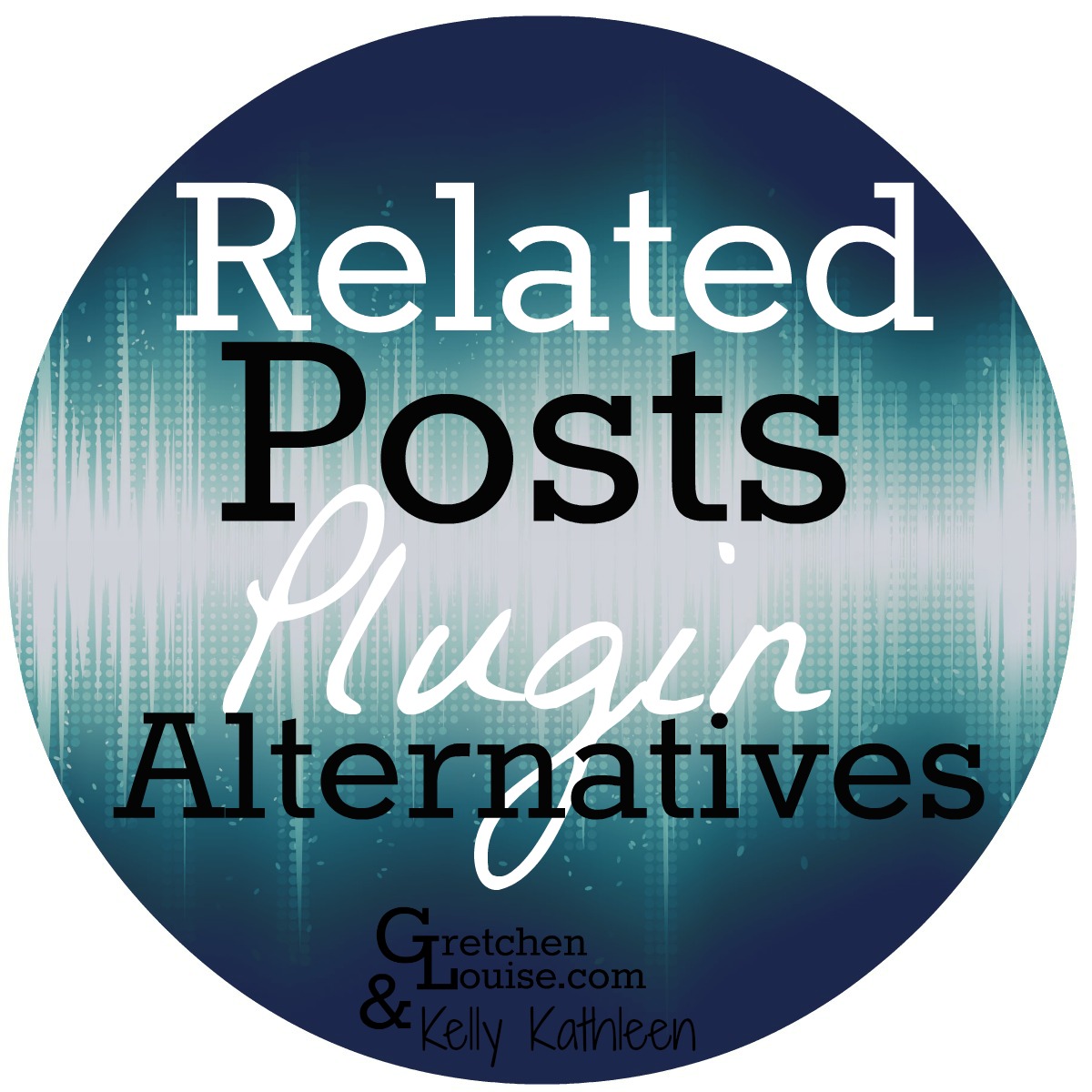
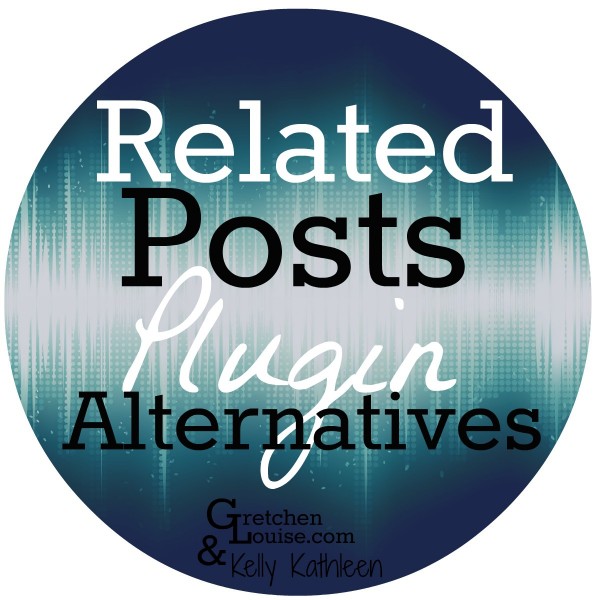
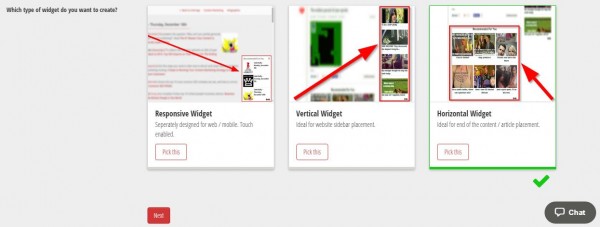
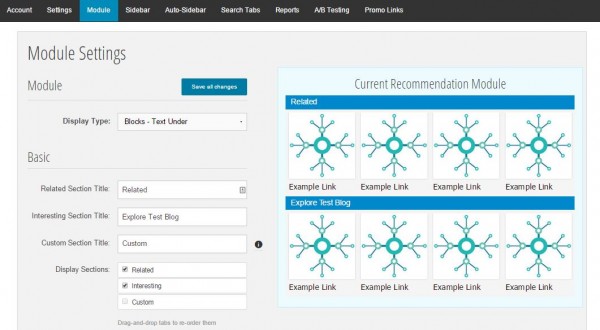
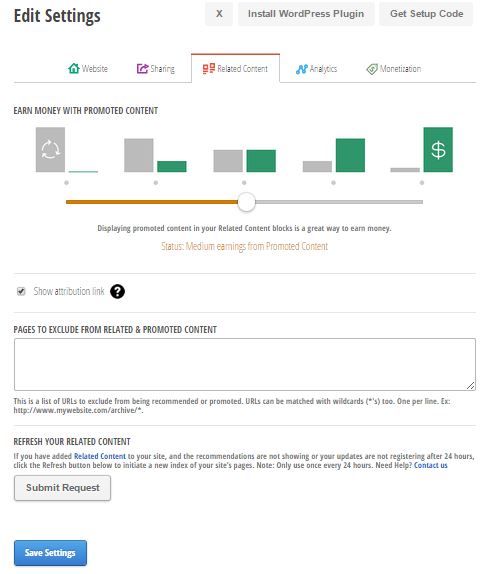

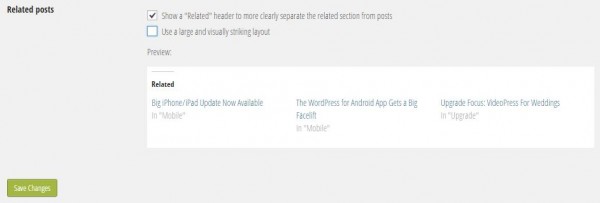
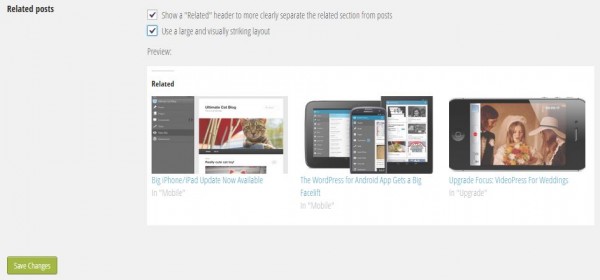

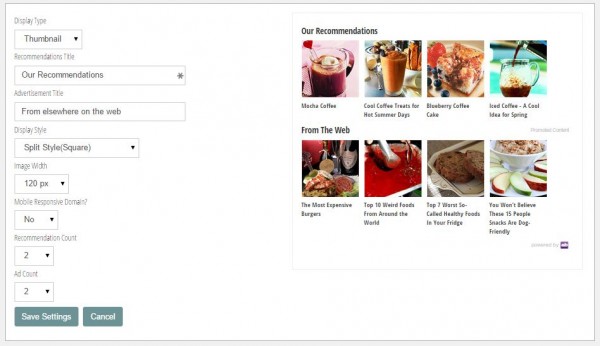
Remember how I said I would be back to share a better related post plugin when I found it a few years back? Well I never forget my promises. I just found one called Yuzo related posts. It is almost exactly what nrelate was but better. You have more control. It is perfect! Enjoy!
Yep agree, Yuzo is fantastic
although currently i’m testing out Contextly and so far I’m really likely it (if it does improve pageViews then the cost will be justified — time will tell)
Thanks for the article! I tried Share-A-Holic, but it slowed my site down considerably, it required quite a bit of CSS to get the fonts and colors to match my site, and it kept populating my contact and newsletter pages even after I had added them to their “do not include” option. I also tried Related Posts for WordPress by Barry Kooij (not reviewed here), and it was better. I ended up deleting it, though, because it wasn’t responsive after I finally added all the CSS to get it looking right. Finally, I’m using Yuzo-Related Posts. It was super-easy to customize, adapted to the look of my site without extra coding, and it is completely responsive.
You should probably drop outbrain down to 1/10… Or remove it from this list completely. I say this because i have had to remove outbrain from my site seeing as it started displaying links to other sites. i contacted support because i thought this was a glitch but it turns out outbrain holds the right to actually display links to other sites and “whatever money is made is being used to maintain their great plugin”. Its sad Nrelate had to go, it was perfect on so many levels. Still on the hunt for the perfect alternative. When i find it i will share it as well.
This is a great article! I was using content.ad, but I had a hard time figuring out how to insert code or change code for a custom placement, so I deactivated it. This gives a detailed and thorough description of other options. Thank you!
Great information here, I too am bemoaning the loss of this plugin! After reading thru the wealth of info, I still am not quite sure. Is Reverb the only one that allows you to add links to your other sites? I have a network of three content related sites that have a ton of cross traffic due to the related posts plugin. Thanks so much~
Contextly also allows this option, but they have a limited free structure.
Hi again,
Just thoughtI’d mention that Yarpp claims that their “Pro” version is not a drain on server resources:
“While it’s true that YARPP Basic can be resource-intensive, we’ve solved that issue through the YARPP Pro version (also free). YARPP Pro runs off of our servers, and gives you the same abilities for widget styles and customizations. You can also make money by including as many sponsored recommendations as you want.”
From a recent email exchange with them.
But I am still reluctant, very reluctant, to accept it if they require a minimum of 25% of advertising. I don’t want advertising on my site, especially advertising that I am not controlling myself.
Oh, that’s really good to know. I wonder if they will consider a paid “pro” version that did not require any advertising?
Well, I guess it would have to be tested to verify that it is true that it does not consume too much resources. And I am not in a position to test it. (Especially since my web host does not allow it.)
Exactly. The fact that many web hosts block YARPP is an issue that it seems like YARPP needs to resolve with the hosts. Perhaps they could allow the pro version if it passed tests.
I agree with you that losing nRelate was a real loss. I liked the service & am sorry they discontinued it. After reading your review, I’ve decided to go with Content.ad. Just installed it and it’s up & running. Not sure how the revenue will work since it’s not click-based. Even though Content.ad says it pays more when the reader takes the specified action (e.g. buying, etc.), I’m not sure how well it will pay.
Hope it works well for you!
Just switched from nrelate to engageya. Seems ok for now. Checkout.. http://www.newsblist.blogspot.com
Hi Gretchen,
I’ve been following the nRelate closure on your blog. I’m bummed about the loss of some core functionality to our web properties. Based on your experience working with the other options out there, I’m wondering which direction you think we should go. Our WordPress Website operates as a portfolio for our artists: http://store44.com while our Blogger blog acts as a new source about our artists and related things: http://blog.store44.com. We used nRelate on both properties to point at each other, AND offer suggestions based on a collection of the artists’ other URLs (like their FB, Pinterest, Twitter, etc.)
Basically, the bottom “You may also like” section of each post is more information about a specific artist (other posts about the artist on this WordPress, other posts about the artist on our blog, and other related links about the artist like their twitter feed)
Of the products you’ve tested, which do you think comes closest to matching this functionality? Thanks!
Hello Michael. Wow, it sounds like you have some complex needs there. Contextly would do a great job at that, I believe, but I’m not sure if your site views would make that a bit of an investment. Engageya also offers additional feeds for related content, but the content displayed on each post isn’t necessarily “related”, so it may not show the actual artist information you’re hoping to display. Have you considered custom coding something in WordPress, perhaps an after post widget or this option from WPBeginner?
Thanks for your response! I’ve tried both Engageya and Contextly. Engageya seems to conflict with the Post Snippets plug-in I’m using (or perhaps it’s my theme), so I had to pull it. Contextly works, and it comes close to delivering the same experience, however 98% of the styling options for the content occur in CSS and not the plug-in itself. In order to get the look I’m after I’ll have to dive deep into some CSS. Also, the Contextly plugin works with WordPress and Drupal – they don’t have one listed for Blogger, but you can contact them about it. For now, I just reinstalled LinkWithin on Blogger, although I’m losing a lot of outbound links that way. nRelate allowed me to include other feeds as “suggested reading” enabling me to link to the artists’s other URLs. Back to WordPress, I was able to mimic the functions of those additional outbound links to the artist’s other URLs by combining all their feeds using Yahoo Pipes, and giving Contextly that combined RSS feed for the custom section. You’ll see at the bottom of each post, 3 related sections; One for interior links, one for links to our blog, and one for links to the artist’s blogs. Pretty cool, overall, I just need to figure out how to limit the number of boxes Contextly shows on a page – but maybe I’ll wait a bit to see if there’s any improvement in traffic. With nRelate, we could choose how many links from each source – for example, 3 from our site, one from our blog, and one to an artist URL. That limited number of out links meant they were relevant to that page. With Contextly, there’s a total of 18 links – 6 in, 6 to our blog, and 6 to the artists. With that many links for relatively few posts, they’re not always that related.
Here is a typical page on our site that uses all 3 Contextly modules: http://store44.com/2014/photography/fashion-photography-123-queso-irene-pena/
Overall, I’ll miss the simplicity and cross platform functionality provided by nRelate, but I’m sure Contextly will do the trick, and maybe even more.
Thank you so much, Gretchen and Kelly. When I first saw the nRelate update, I think I wanted to stick my head in the sand! lol If you had asked me to list the plugins that were my favorite and essential, nRelate would be in the top 5, hands down. I had even just installed the flyout and was loving it!
Your post was a lifesaver. I always have a lot going on, but this month more so (and not just because of the holidays, but two other major things going on). So, I really thank you because your post saved me so much research time! I had thought that Zemanta was the only option, but now I am installing a couple of others.
Bless you!
-Deborah
Thanks for your comment, Deborah! I’ll look forward to hearing which plugin you end up liking best.
ZEMANTA
Tried these too… I find it totally confusing with the three versions they have. Why do that? It only creates more work (for the publisher). And there is no discernible difference between the two that work.
— “Related Posts” (published by Zemanta)
As you say, this totally crashes the site. Once activated the admin pages become inaccessible and the only thing you get is a page saying “Fatal Error”. DANGER.
— “Related Posts by Zemanta” and “WordPress Related Posts”
They seem to work fine, although the fact that the third version (mentioned above) totally crashes the site, makes me queasy about their code….!
Looks nice with some basic customisation features.
The difference between the two is really, really minimal so I don’t see the point in having two. Tried to modify the thumbnail size but it did not seem to work (or perhaps it takes some time). On the other hand, I am happy with the standard.
Could be a decent option, although lacking a bit in features, but I am not entirely comfortable using it.
Interesting to note that the first crashed your site as well as Kelly’s. I was able to activate it fine on one of my own sandbox sites, but it obviously has compatibility issues!
I agree with you. It seems to work okay but I am slightly concerned about using it. I also found this performance report including Zemanta alarming, to say the least. (Thanks to Kelly for discovering this performance report–it’s very insightful!)
SHAREAHOLIC
Some feedback on Shareaholic…. Not very positive.
I have tested it and it is currently running on this site:
http://www.bkwinephotography.com/
Not sure how long it will stay there, since it doesn’t work well…
1. Too much in a bundle
Like with Jetpack, it includes several different functions and features, not just related posts. So you have to disable several things to use it for only RP. Of course, if you don’t have share buttons and social media buttons on your site already then it can be good. But I do have that with a service that I am very happy with.
2. Monetisation
You have to be careful to disable all the monetisation option otherwise you will end up with various ads AND affiliate links that you may not want. It is not very well explained what those monetisation features are nor how any revenue is split (is it split at all or does it just go to Shareaholic?).
In any case, I don’t want to have ads in my RP links, nor affiliate links.
3. Cookie banner
I found one thing that sounded interesting in the bundle of “additional” features that it offers: the cookie banner. So I turned that on. Bad idea. Now I get the cookie banner every time I open up a new session with that site.
Even if I click “OK, I’ve understood and accept you use cookies” that banner comes up again next time I go to the site. Very annoying!!
So, not a useful feature. Will turn that off.
That said, now to the MOST IMPORTANT part: the related post feature.
4. Serving related posts
Well, it just does not work. It always serves the same related posts, the five or six most recent posts.
On the settings page it still says (after around 24 hours) “processing”. Perhaps there is some problem with the indexing, but it does not seem to work on this site.
It also has very few configuration / design options. You can’t choose how many stories to show. Can’t choose the thumbnail size. Can’t include other, related sites that you want include. Yes, you can choose from a few design options, some which are nice, but that’s it.
If the indexing worked and it actually showed some related posts, then this could be a possible option, although not ideal, but as it is it just serves up the six most recent posts as “related” all the time. Perhaps others will have better luck.
Just double checked the indexing status on Shareaholic in the “Edit Related & Promoted Content Settings” and it says “Last full re-index was completed on: December 6 2014…” but on the main admin page it still says “Status: Processing”. Seems something is not working as it should here.
Another thing I don’t like about it: some of the settings and configuration is manages on the Shareaholic site, NOT on the admin pages of the WordPress install. Perhaps not a big deal, but not the way I like it to work.
It does sound like there’s an indexing issue. But I agree with your comparison of Shareaholic to Jetpack: bloated with too many features!
The cookie banner is annoying (and makes me wonder how many cookies Shareaholic is placing on my site). Not to mention the bother of turning off all the monetization features.
Thanks for your comments!
One additional feature (not on your list) that is very nice for a Related Posts plugin:
To specify one or more “other” sites that should be included in the related posts recommendation.
For example: we run for sites. they are separate but have related contents. It would be nice to be able to include recommendations from the three other sites in an RP module. (I am not sure but I think that nRelate actually could do that.)
I don’t think that feature was in nRelate, but I’ve seen it in at least one of those that I reviewed above. YARPP has that option for sure.
In addition, Engagely which I just added to the review allows you to add your Facebook page and other related feeds for additional content suggestions.
Very interesting! Thanks.
I find most of the options not very appetising, apart from Contextly. But can’t quite swallow to pay $50 per month for an RP plugin… It has to do magic with traffic numbers to motivate that . Hands up those who believe that it will…
nRelate did have a big issue though, that it did not work on a multi-lingual site (we run one with WPML). In that case we used Linkwithin instead.
That the related post plugin works on a multi-lingual site is important! Many people use WPML for multi-lingual sites.
But I don’t really like the Linkwithin solution. It is so very anonymous and doesn’t give you any info at all on what it does or how it works (and no config options). Just gives me bad vibes. And no config options.
Tried Jetpack but I don’t like the way that works either: a) seems to be an “usine a gaz” as they say in French, meaning something that is complicated and tries to do a lot of things. I don’t want to have all that other stuff that Jetpack forces upon you, I just want RP. Even with the best of intentions I can’t see that most of what Jetpack does would be of any use. And, b) the Jetpack solution for Related Posts gives a really ugly result on the front end with no options to make it look better or behave nicely with your theme.
Have previously tried Reverb and Outbrain but neither of them worked well. Don’t remember what were the problems exactly. I think that I never got Outbrain to work properly and for Reverb, well, I don’t remember.
Used Zemanta for contextual links (not related posts) previously and wasn’t thrilled. What you say about the difficulties to make it work for RP makes me queasy…
Will try Shareaholic next although the way you describe it makes it sound as if there is a big risk that they will sneak in links and whatnot to try to generate revenue for them from your site. Does not sound nice at all.
And so, if all else fails, I guess I’ll have to stick with the lesser evil of Linkwithin.
I did find these options which do allow you to customize Jetpack’s Related Posts somewhat: http://jetpack.me/support/related-posts/customize-related-posts/ However, I agree with you about Jetpack. I’d rather not use it if at all possible.
This morning I discovered Engagely, which appears to have multi-lingual support. It reminds me of LinkWithin if you set it up and download it on their site, except that you can also install it as a normal plugin. It gives you stats and an admin panel an a plethora of beautiful layouts. You might check it out.
Yes, you can no doubt do a lot of customisation (not only with Jetpack) if you do it with code or with CSS. To me, that is not acceptable and I don’t consider that as a customisation feature.
For me, customisation must be done in the configuration panels of the plugin. If there are no options there, then it is not customisable.
Hi Per,
Ryan Singel here from Contextly. I appreciate your thoughtful takes on the various solutions.
I’d love to see what you think of Contextly. For instance, we can include your YouTube videos in the related section (played in a lightbox on your site) and have ways for you to promote things like your book and wine tours.
Plus, we offer a full 30-day free trial.
If you have any questions, I’m ryan @ contextly dot com.
Best,
RS
P.S. unlike LinkWithin, we have an *excellent* privacy policy.
Well, Contextly has to do magic with the traffic for it to be worth considering. Generate significant amounts of new traffic, well above what any other (free) service would do. Not just a little more but orders of magnitude more, to motivate the $50 per month that it would cost on just one of our sites. (We have four and my guess is that it would be more fees per site.) So, for me, it has priced itself out of the competition.
Gretchen,
I just saw this update that nrelate is bidding goodbye.
Felt so bad that it was just 1 month back I updated to this from linkwithin 🙁
Have installled Zemanta now and has left it to default, but really needs to look into the configuration and manual editing which looks like a piece of cake 🙂
Great options for related posts plugin 🙂
I know, I’m going to miss nRelate! It was a 10 out of 10, for sure.
I’ll be curious to hear how you like Zemanta. I haven’t settled on an option yet, but Zemanta looks promising.
Great review, I was only still wondering how Addthis fits in this comparisment? especially the Smartlayers version?
I just gave AddThis SmartLayers plugin a try, and the install was easy, but there are absolutely no custom options. And so far, even though it’s been 24 hours, not a single related post is showing. If you’ve tried it with better success, I’d be interested to hear!